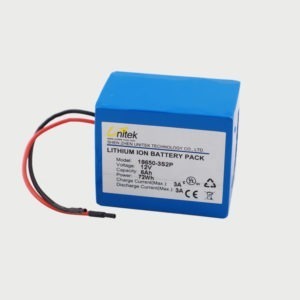Lithium ion battery protection circuit includes overcharge protection, overcurrent / short circuit protection and over discharge protection. It requires high accuracy of overcharge protection, low power consumption of protection IC, high withstand voltage and zero volt chargeability.

In recent years, more and more products such as PDA, digital cameras, mobile phones, portable audio devices and Bluetooth devices use lithium-ion batteries as an important power supply Lithium ion batteries have the advantages of small volume, high energy density, no memory effect, high cycle life, high voltage batteries and low self discharge rate. They are different from nickel cadmium and nickel hydrogen batteries. Lithium ion batteries must consider the safety during charging and discharging to prevent characteristic deterioration Protection against overcharge, over discharge, overcurrent and short circuit of lithium-ion batteries is very important, so protection circuits are usually designed in the battery pack to protect lithium-ion batteries.
Principle of lithium ion battery protection circuit
Overcharge protection
The principle of overcharge protection circuit is: when the external charger charges the lithium-ion battery, in order to prevent the rise of internal pressure caused by temperature rise, it is necessary to terminate the charging state At this time, the protection circuit needs to detect the battery voltage, activate the overcharge protection when it reaches 4.25v, turn the power from on to off, and then cut off the charging. In addition, attention must also be paid to overcharge detection misoperation due to noise, so as not to be judged as overcharge protection Therefore, the delay time is to be set, and the delay time cannot be shorter than the duration of the noise.
Over discharge protection
In the case of excessive discharge, the decomposition of electrolyte leads to the deterioration of battery characteristics and the reduction of charging times Lithium ion battery protection circuit can prevent excessive discharge and realize battery protection function.
Overcurrent and short circuit current
In case of overcurrent or short circuit due to unknown reasons, the discharge must be stopped immediately to ensure safety.
The principle of overcurrent protection circuit is that when the discharge current is too large or short circuit occurs, the protection circuit will activate overcurrent protection.
New functions of lithium ion battery protection circuit
Overcurrent protection during charging
When the charger is connected for charging, an overcurrent occurs suddenly, and the circuit immediately detects the overcurrent. At this time, the cout will change from high to low, and the power will change from on to off to realize the protection function.
Lock mode in case of overcharge
Usually, the protection circuit will pass a delay time during overcharge protection, and then turn off the power to achieve the purpose of protection. When the lithium-ion battery voltage drops to the release point, it will recover.After overcharge protection, as long as the charger is connected to the battery pack, it will enter overcharge locking mode At this time, recharging will not occur even if the voltage of the lithium-ion battery decreases. The state of charge and discharge can be restored by removing the charger and connecting the load.
Reduce the size of protection circuit assembly
The delay capacitor for overcharge and short circuit protection is integrated into the protection IC to reduce the size of the protection circuit component.
Requirements for performance of protection circuit
High precision of overcharge protection
In case of overcharge of lithium-ion battery, the charging state must be cut off in order to prevent the rise of internal pressure caused by temperature rise The protection circuit will detect the battery voltage. When overcharge is detected, the power of overcharge detection will turn it off and cut off charging.
Reduce power consumption of protection circuit
With the increase of service time, the voltage of the charged lithium-ion battery will gradually decrease, and finally fall below the standard value. At this time, it is necessary to recharge If you continue to use the battery without charging, it may cause excessive discharge and make the battery unable to continue to use In order to prevent excessive discharge, the protection IC must detect the battery voltage. Once it reaches below the excessive discharge detection voltage, the power of the discharging party must be turned off to cut off the discharge.
Withstand high voltage
When the battery pack is connected with the charger, there will be high voltage instantly, so the protection circuit shall meet the requirements of high voltage resistance.
Low battery power consumption
In the protection state, the static current consumption must be less than 0.1ua.
Zero volt rechargeable
The voltage of some batteries may be as low as 0V due to too long storage or abnormal reasons, so the protection IC can also be charged at 0V.
